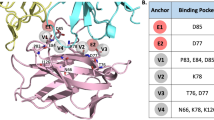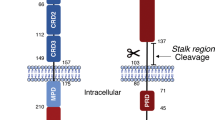Abstract
The efficacy of many cancer treatments is due to their ability to induce apoptosis. DR5 can activate apoptosis pathway after binding with its natural ligand, tumour necrosis factor-related apoptosis-inducing ligand (TRAIL/Apo2L). Both TRAIL and agonistic anti-DR5 monoclonal antibody are currently being explored for cancer therapy. The mechanisms of cytotoxicity of our previously prepared monoclonal antibody A6 against DR5 were investigated here. A6 could cause viability loss of Jurkat cells in both time- and dose-dependent manner which could be attributed to the activation of apoptosis pathway. Caspases 3, 8 and 9 were activated in Jurkat cells and the caspase specific inhibitors, such as broad caspases inhibitor Z-VAD-FMK, caspase 8 specific inhibitor Z-IETD-FMK and caspase 9 specific inhibitor Z-LEHD-FMK could recover the viability loss caused by A6. The function and molecular mechanism of TRAIL-mediated apoptosis were also investigated and compared with those of A6. Although A6 and TRAIL recognize a different epitope, they could induce a similar reaction in Jurkat cells.
This is a preview of subscription content, access via your institution
Access options
Subscribe to this journal
Receive 12 digital issues and online access to articles
$119.00 per year
only $9.92 per issue
Buy this article
- Purchase on Springer Link
- Instant access to full article PDF
Prices may be subject to local taxes which are calculated during checkout
Similar content being viewed by others
Author information
Authors and Affiliations
Corresponding author
Rights and permissions
About this article
Cite this article
Wang, Y., Zhao, K., Chen, J. et al. The Characteristic of an Anti-Human DR5 Antibody A6. Cell Mol Immunol 5, 183–188 (2008). https://doi.org/10.1038/cmi.2008.22
Received:
Accepted:
Issue Date:
DOI: https://doi.org/10.1038/cmi.2008.22



